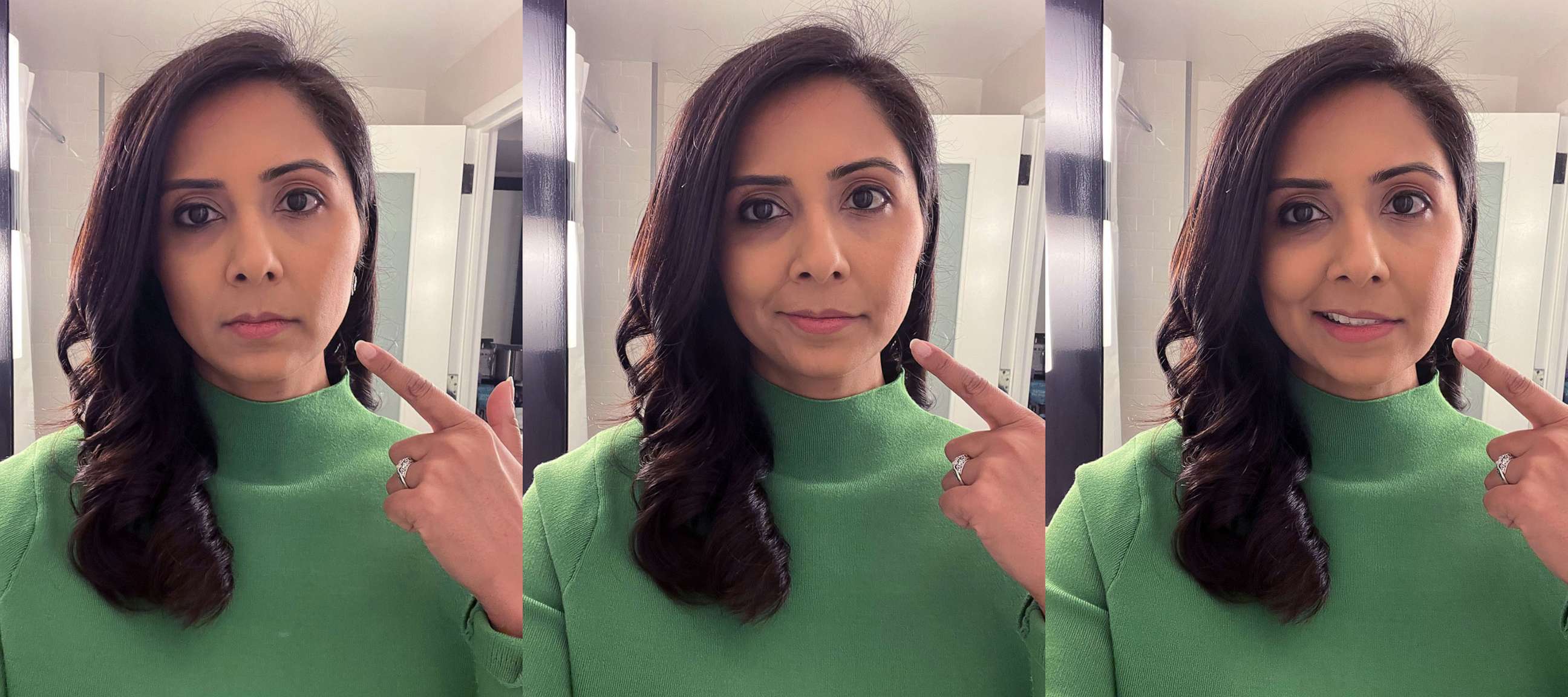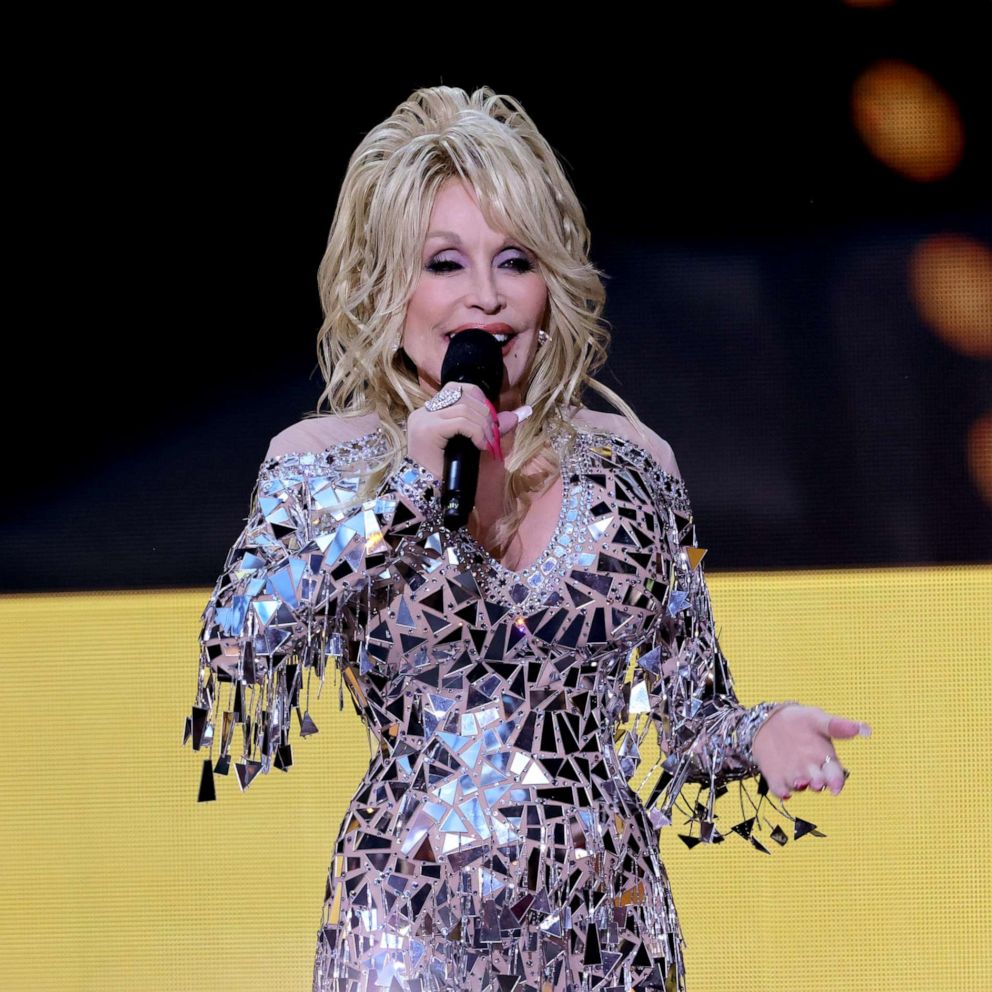Reporter's notebook: Facing cameras with a half-frozen face after Bell's palsy diagnosis
ABC News' Zohreen Shah shares details of her medical crisis.
Zohreen Shah is a Los Angeles-based national reporter for ABC News. Below, she shares the story of a medical journey she faced both on and off camera.
At first, I thought I was having a stroke last month.
I didn't recognize myself in the mirror. It looked like the left side of my face had gone "offline." Half my face was totally frozen.
I screamed, cried and called 911.
EMTs arrived, telling me what a doctor would later confirm: I was actually suffering from Bell's palsy, a rare nerve disability where half the face stays temporarily frozen for weeks -- sometimes months. The onset is often confused for a stroke.
It can feel traumatizing. The instinct is to throw on a mask or hide at home.

But I'm a national television reporter. My face is a big part of my job.
Within hours, I was supposed to be in front of many cameras, crisscrossing the country for an interview, and shooting segments with my frozen face that would forever live online.
Bell's palsy can 'suddenly activate'
Every year, Bell's palsy suddenly activates in roughly 40,000 Americans, according to the National Institutes of Health.
Anecdotally, nearly all my friends knew at least one person who has been through it.
George Clooney and Angelina Jolie have shared their own experiences with the condition -- pretty solid proof that you can be totally OK after going through this. Justin Bieber also recently suffered from a nerve paralysis which made half his face freeze, an even more severe condition called Ramsay Hunt syndrome.
Doctors believe Bell's palsy may be caused by a viral infection.
With Bell's palsy, the nerve that allows muscles to control facial expression stops communicating with the brain -- giving the appearance of half the face being frozen. It can't move, and so for many people, it sags. The eye on the frozen side often bulges.
Many of these symptoms, including the initial ones I first experienced, are really similar to a stroke, so the EMTs that arrived at my doorstep, and my mom, encouraged me to go to a hospital so it could be ruled out.

After two hours in an emergency room, a doctor ran a couple tests to see if my arms and legs were moving OK and he asked me to lift my forehead. Only one side could move.
He confirmed I had Bell's palsy and prescribed steroids and eye drops.
He also assured me that for most people, within two weeks to six months, their face returns to normal. I made myself believe mine would too.
Can you keep working with a severe nerve condition?
Medically speaking, there was no reason for me not to work.
And that was good news, because in just a few hours -- that very next morning, I had a shoot for an episode of our new ABC News/Hulu show called "Impact X Nightline."
But should I do it? Was I making the shoot harder or easier for the team? Was I setting an unfair bar for future female reporters? Would they be expected to work through a facial paralysis?
I was aching to connect with another reporter who understood my job and could guide me through these questions, but I didn't know anyone with this type of nerve condition who had continued to work on-camera. "Good Morning America" co-anchor Robin Roberts often says "make your mess, your message," and I made a pact with myself that when I recovered, I would write something to help the next person like me.
But at this very moment, I had an urgent problem: Much of our piece had already been shot and my face was all over it. There were two big interviews left.
I proposed a plan.
I would go to the shoots, and have our team shoot just my right profile, the side with movement, in frame.
If I wasn't a distraction, the team could use the shots. If it was, they could cut my face and my questions out of the piece entirely. At least that gave everyone options.
I got to the shoot and tried my hardest to not smile at anyone. My wonky half smile was a dead giveaway that something was wrong. This was so hard. I broke into an involuntary grin every time someone looked at me with their smiling face.
I took a seat at the interview and focused on the face sitting in front of me instead of my own, and let 14 years of reporting muscle memory guide me.
During a lunch break, my camerawoman uploaded the clips onto her computer. I wasn't sure if I'd look normal. I've been in front of TV cameras for 11 years. I've watched countless hours of tight camera angles on my face and scrutinized every inch. And I know cameras capture literally everything. A smallest muscle shift can convey a totally different emotion: hesitation, happiness, grief. Half my damn face was frozen.
But I was relieved when I saw the shots. I couldn't tell anything was off. Nothing in my tone or body language revealed my secret. If I couldn't see the problem -- others likely wouldn't either.
Unfortunately, I wasn't out of the woods. What I strangely learned is that this journey would get harder.
Bell's palsy isn't just about appearance
I attracted concerned glances from every stranger who saw me and eventually started wearing a mask.
But Bell's palsy is actually more than what you look like.
A few hours after that first shoot, I was on a red-eye flight to New York for a final interview. But when you have Bell's palsy, your eye on your frozen side remains wide open -- all the time. I looked like an extra from "Thriller." You can't blink to naturally keep your eye watery. I had to manually pull my eyelid down with my hand or douse it with water drops. So sitting up while sleeping isn't easy. I tried pressing my face in every way I could against the airplane's tray to keep it shut. Eventually, I fell asleep -- with one eye wide open.
Over the next few weeks, I would struggle at moments to see clearly out of it. My eye doctor ran tests, and said a lot of Bell's palsy patients will have dry eyes, and there was nothing to worry about.

It also affected how I spoke.
Days after the shoot when I went to track the voiceover to my story, I had lost the ability to easily say many words with "b" "m" "p" or "w" -- because those letters required my full face to pronounce. Our "Impact" producers listened through the phone so they could catch any small slurs and help coach me. In some cases, I felt like I was re-learning how to speak with half my facial muscles.
There were a lot of other surprises: When I tried to take a gulp of water, half ended up on the ground. I couldn't use a straw. And showering was difficult because I couldn't close my eye to keep out water.
Gratitude versus grief
Despite all of this, I was actually "net happier" after my Bell's palsy diagnosis. After all, it wasn't a stroke, which would have been life-threatening and could have much more serious long-term effects.
I felt like I had a second shot at life, and that gratitude kept me going for a while.
But even within those first few weeks, sometimes it was hard to brush off the grief. It would often hit me after holding up my phone to document my condition. My husband would hug me and we'd both break down.
The face in the frame just could not function the same way it used to. I knew that in the smallest chance I didn't recover, my career as an on-air reporter would never be the same. Just like singers can't perform without their voice, on-air reporters can't go long without their whole face.
I wouldn't be able to improvise too long.
Facing recovery
But luckily, things got better.
After we finished the story, I took a break. I embraced all the Western medicine my doctor prescribed, including steroids, and Eastern medicine -- my friend Chrysten's consistent acupuncture and herbs, and everything my chiropractor's office offered.
I also knew I wanted to keep my spirits up. I constantly reminded myself that this was one of the easiest things I could be diagnosed with: it was likely temporary. Speaking to our ABC News producer Jenna who had recently gone through the diagnosis, and spending time with friends who dropped by also helped.
Eventually, something started to connect, and my face slowly began coming back online.
On day five, I could somewhat control my left eye and almost shut it all the way.
On day seven, I felt pulsing on my lower left face, a feeling that maybe it was trying to move.
By day 14, it would have been hard for a stranger to know something was wrong with my face.
And by day 19, it was hard for me to notice my face was asymmetrical -- and I was ready to return to work.
I still haven't watched that 30-minute "Impact" episode. I will. Right now, it feels like watching it means having to re-live those first few days of having Bell's palsy.
But I did face the cameras again for an interview.
Just this time, it was a heck of a lot easier. I had my entire working face, and a heart full of gratitude.







